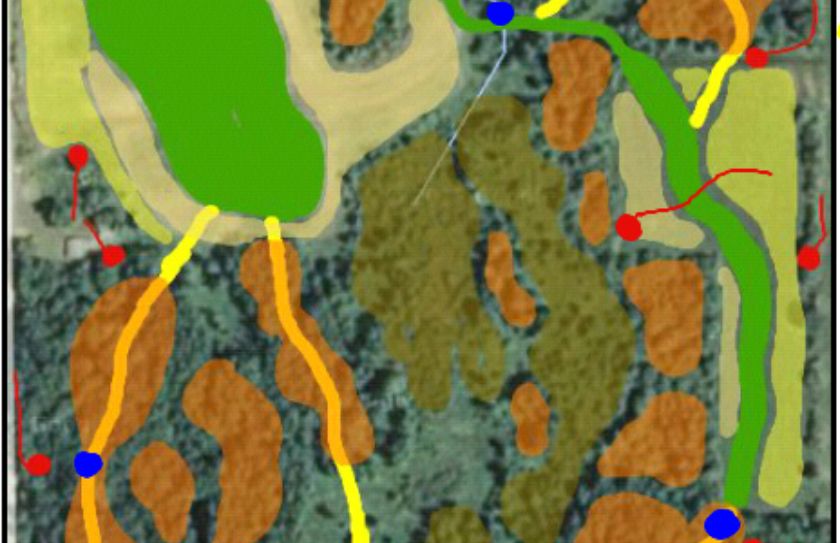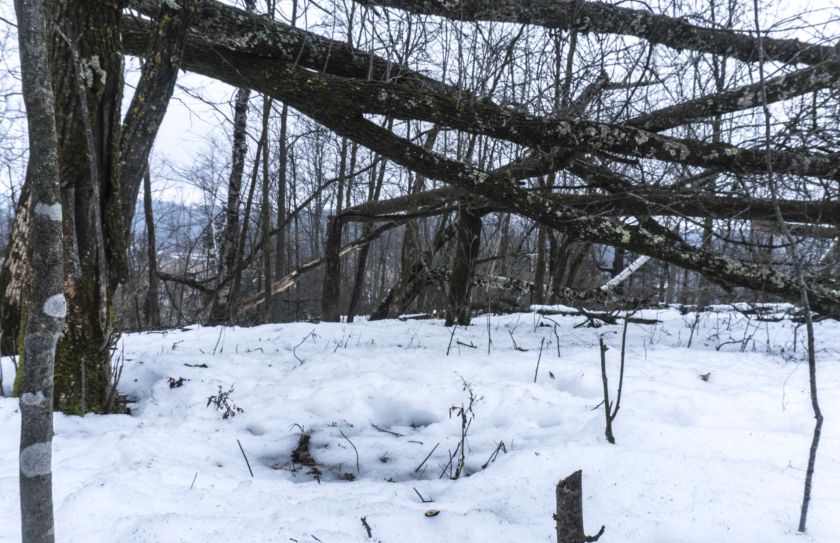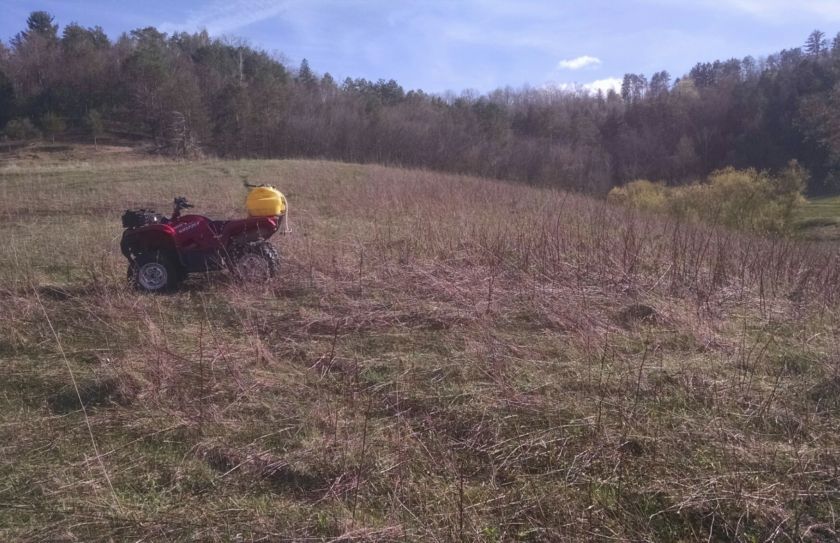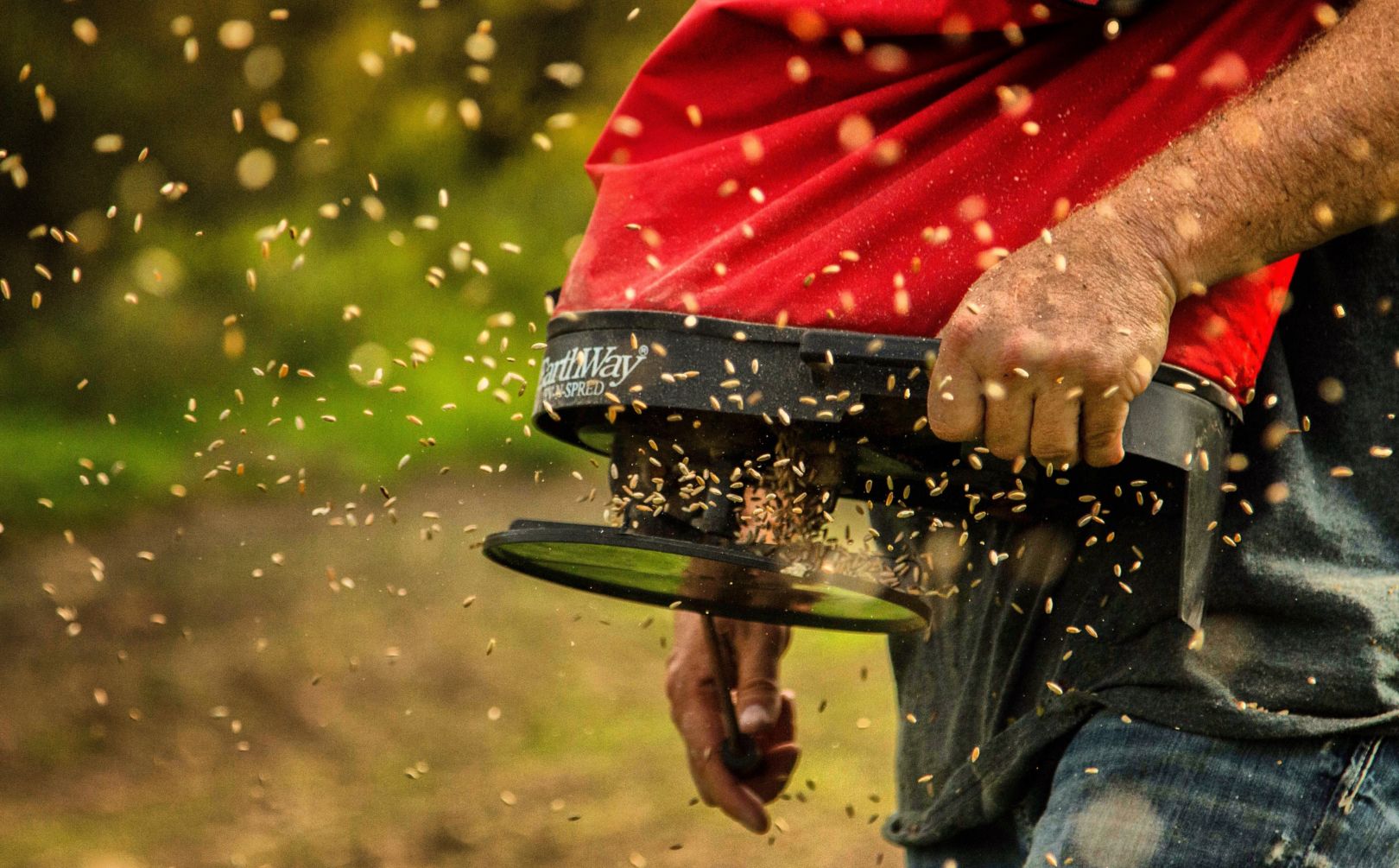
Designing a successful whitetail property can seem like a daunting task. However, by breaking down the habitat improvements into these 5 steps, your whitetail dream parcel doesn’t seem so far off! Focusing on these basics will allow you to define deer movement on your property, which will ultimately define how to access and hunt your land.
1. Safe Fall Food Source
Often, hunters believe that simply having a large food source will be enough to attract and hold mature bucks on their property throughout the season. Unfortunately, ample food alone will not guarantee encounters with mature bucks on your parcel. One of the most important factors in a successful whitetail habitat design is making sure that food sources are located in safe areas that are screened from hunter access. Ensuring that hunter sight, sound, and scent does not interfere with feeding movements will allow for a daily cycle of deer movement to develop. These highly predictable movements become the building block to a successful hunting season. Offering diverse and layered food plots will not only promote their attractiveness to the local herd throughout the entire season, but will provide the foundation for you to be able to access and hunt your land without spooking deer. To learn more about providing diverse food sources, check out Jeff's great article on Layered Food Plots for Whitetails.
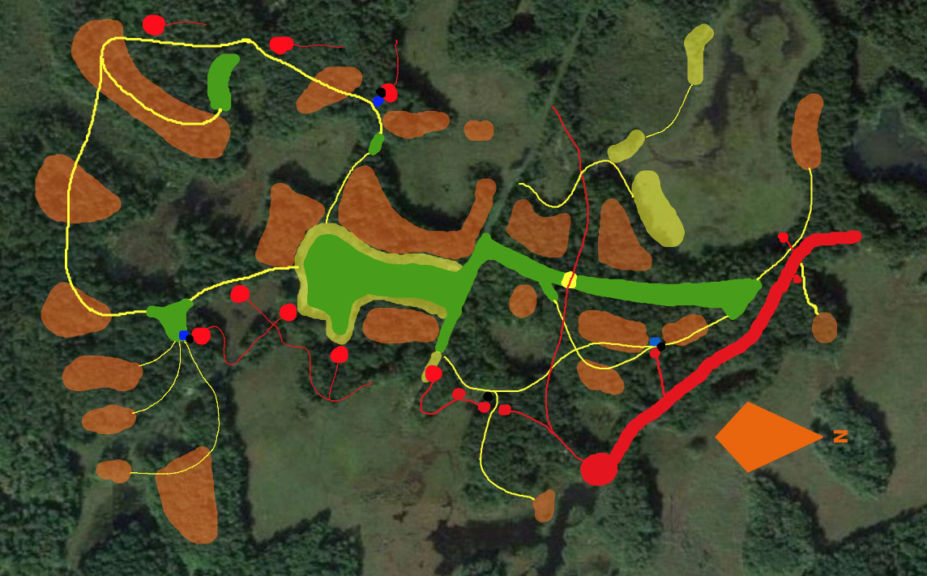
2. Adjacent Doe Bedding Opportunities
Doe bedding areas near food sources are a critical portion of a successful parcel design. Doe family groups tend to choose the bedding areas nearest their afternoon food source. By creating bedding areas directly adjacent to food sources on your parcel, you can expect does and fawns to relate to them. In the property design above, you can see how creating bedding (orange) adjacent to food sources, will in turn make room for more bedding areas throughout the entire parcel. By screening the large food plot with switchgrass, hinge cutting the adjacent timber, and reducing hunting pressure on the food plot, doe family groups will be comfortable bedding directly adjacent to the food source. In the end, defined doe bedding and well hidden food sources, help you to define your hunting movements to keep from spooking the bulk of the herd. Before you fire up the saw and head for the woods, be sure to read Jeff's Hinge Cut Bedding Guide.
3. Buck Bedding Opportunities
In short, doe bedding areas determine where bucks will bed. Opening opportunities near food sources for does, allows for closer buck bedding opportunities. By encouraging bucks to bed closer, you will be awarded with better daytime buck movement and it will be less likely that bucks will travel to the neighboring parcels to bed. Your goal is to shrink and compact the overall afternoon feeding movement on your land, from the back of buck bedding areas, thru doe bedding areas and finally to food. This allows for safe-access evening stand locations closer to food, and high quality morning stand hunting on the backside-downwind side of buck bedding areas. For more information on creating buck bedding areas, read The Mystery of Building Buck Beds.
4. Travel Corridors
Defining deer movement between habitat improvements allows for pinpoint stand locations. By opening and hinging corridors to guide movement, creating tunnels through shrub-country or mowing thru grasses or weeds, you can easily encourage deer to travel within bow range. Creating highly defined travel routes between buck bedding, doe bedding, and food sources will create excellent opportunities for multiple stand locations on your whitetail parcel. However, it is critical that your food sources, doe bedding areas and buck bedding areas are pointed towards each other first, to take full advantage of the natural lay of the land, so that you can get in and our of your land while avoiding deer. If you're looking to add travel corridors to your parcel design, check out Chainsaw Travel Corridors for Deer.
5. Enhanced Stand Locations
Adding attractions to stand locations can enhance their potential success. Waterholes and Mock Scrapes can micro manage deer behavior and movement to offer a great opportunity to harvest a mature buck! Adding complimentary stand locations around these features will present the opportunity to hunt the area in a variety of different conditions. For more details on Complimentary Tree Stands, waterholes, and mock scrapes, check out this great video on a stand location we created last year!
Conclusion
If you’re hoping this is the year your parcel design will come together, focus on these 5 basic steps to make it happen! These 5 basic whitetail habitat steps will first define how the deer move about your land and when they are fully implemented, you can then define how you safe access and hunt your land.
Jeff has visited over 600 clients in 22 states across the country. These habitat and hunting improvements have become the basis for every client parcel he visits. If you're interested in having a WHS team member visit and design your whitetail parcel, check out a list of our services, we would love to help!
By Dylan Lenz
